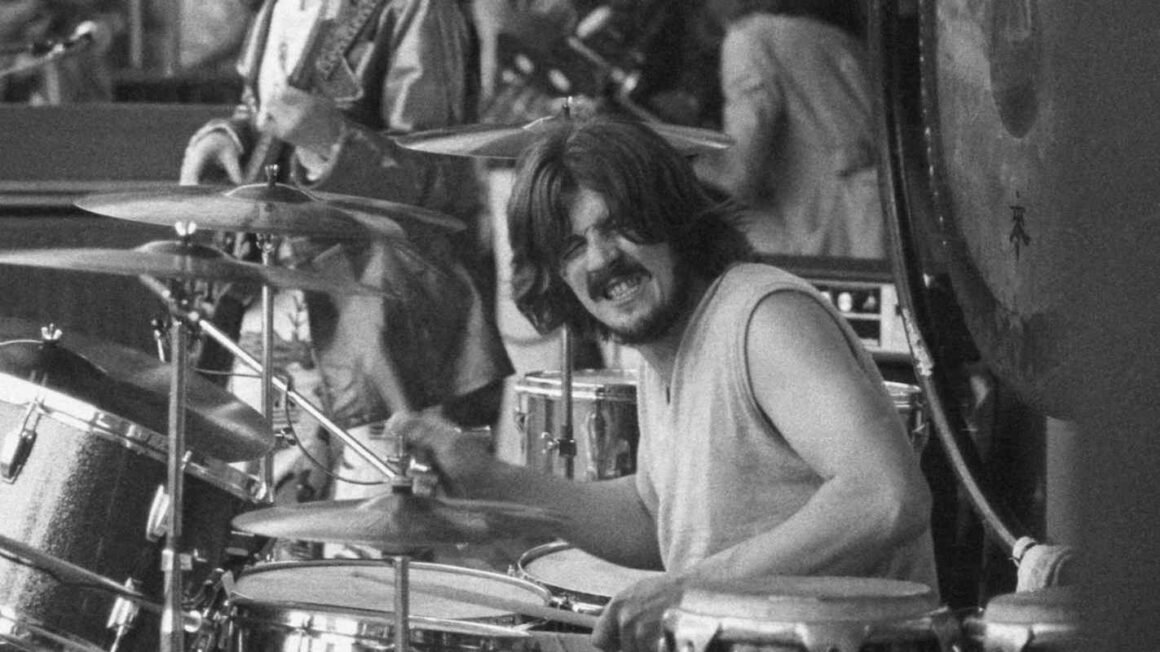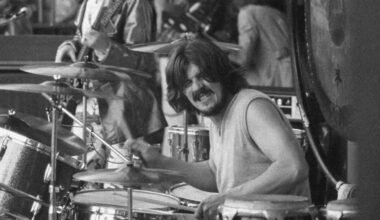John Bonham’s reputation as one of rock’s greatest drummers is undeniable. His skills didn’t just elevate Led Zeppelin’s sound—they transcended genres, solidifying him as one of the most influential drummers to ever grace a kit. While drummers like Buddy Rich and Keith Moon are often celebrated for their electrifying showmanship, Bonham’s brilliance lay in mastering the fundamentals with an effortless groove that set him apart.
Bonham’s style was never about flashy fills or theatrical solos. Instead, he delivered impenetrable grooves and rock-solid backbeats that became the foundation of Led Zeppelin’s legendary sound. His rhythm felt innate, as if it flowed through him naturally, making every performance feel effortless yet extraordinary. This quality has left countless drummers in awe, aspiring to capture just a fraction of his groove.
Across Led Zeppelin’s discography, Bonham’s contributions are consistently stellar, making it nearly impossible to pinpoint a single defining performance. Some tracks, however, stand out as showcases of his genius.
When asked about his favorite track to play live, Bonham often mentioned “Trampled Under Foot” from Physical Graffiti. Inspired by Stevie Wonder’s “Superstition”, the funk-infused groove offered Bonham the chance to lose himself in the rhythm. “It’s just at the right pace,” he explained, “and you can do a lot of frills.” For Bonham, it was about finding a groove and letting it take over—an instinctive approach that defined his artistry.
No conversation about Bonham is complete without mentioning “Moby Dick” from Led Zeppelin II. The track features one of his most jaw-dropping performances, including his iconic drum solo, often performed live with his bare hands.
Dave Grohl, himself a drumming icon, once expressed admiration for the piece, acknowledging its brilliance even as he favored other examples of Bonham’s work. Despite its undeniable impact, “Moby Dick” showcases Bonham in isolation, whereas his full brilliance shines brightest in the context of the band.
Perhaps the ultimate showcase of Bonham’s genius is found on Led Zeppelin IV’s closing track, “When The Levee Breaks”. The song’s drum pattern is deceptively simple, but its execution is nothing short of legendary.
Recorded in a stairwell with a microphone hanging over a bannister, Bonham’s thunderous beats reverberate throughout the track, creating a sound that has become iconic. The raw power and atmospheric depth of his drumming here are unparalleled, making it one of the most sampled drum tracks in music history.
The genius of “When The Levee Breaks” lies in its simplicity. Bonham didn’t need to overcomplicate his parts to make them unforgettable. As Led Zeppelin’s vocalist Robert Plant once said, “John always felt his significance was minimal, but if you take him off any of our tracks, it loses its potency and sex. I don’t think he really knew how important he was.”
Bonham’s drumming wasn’t just about technical skill—it was about feel, emotion, and the unshakable groove that defined Led Zeppelin’s sound. His ability to blend simplicity with power has left an indelible mark on rock music, making him a benchmark for drummers across generations. While others may dazzle with theatrics, Bonham’s magic lay in making the basics extraordinary—and that’s why his legacy endures.








